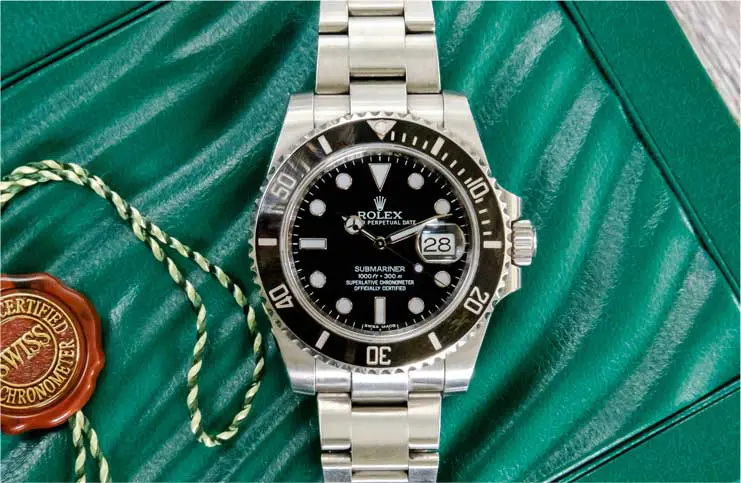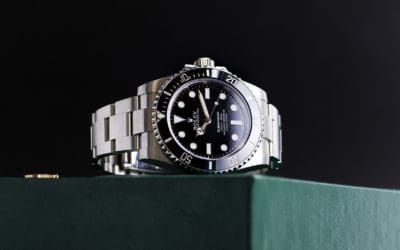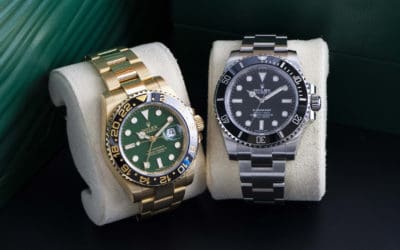Throughout its illustrious existence, Rolex has sponsored attached itself to some of the most important chapters in history. From Sir Edmund Hillary sporting a Rolex Explorer on his wrist as he triumphantly conquered Mount Everest for the first time, alongside Tenzing Norgay in 1953; to the Rolex Deepsea Challenge watch that survived its attachment to the submersible that took James Cameron 10908m into the depths of the Pacific Ocean to reach ‘Challenger Deep’, the deepest point of the world’s oceans.
These important advances in watch technology have always been much more than just gimmicks; providing the collector with a rich source of luxury timepieces which have continued to be a good investment. As Rolex watches have remained a good store of value, they have become the perfect form of collateral for a pawnbroking loan.

Always a brand to push the boundaries of the capabilities of wristwatches, it was one of their first marketing ploys in 1927, promoting the newly developed totally waterproof ‘Oyster’ model, which proved to be one of their biggest coups.

On October 7th 1927, Miss Mercedes Gleitz, a young typist part-time swimmer from London, became the first English woman twelfth person in history to successfully swim the English Channel on her eighth attempt. It took her fifteen hours fifteen minutes. The gruelling task had taken its toll on the young Miss Gleitz – who collapsed, exhausted after the swim, remaining unconscious for over two hours. Perhaps unsurprising, seeing as the swim had been attempted in the far more hazardous month of October, as opposed to the previously favoured months of July and August.
However, glory was short-lived for Mercedes Gleitz, as within a week of her triumphant swim, a woman by the name of Mona McLennan claimed to have completed it in a much faster time of thirteen hours ten minutes. However, suspicions quickly arose as to the legitimacy of McLennan’s claim; when subjected to closer scrutiny, she quickly admitted she was lying revealed her entire account was a hoax.
Unfortunately for Miss Gleitz, even though she had genuinely completed the swim, the public now had doubts as to the validity of her achievement – guilty by association, it seemed. Deeply upset with the accusations, Miss Gleitz defiantly announced she would complete the task again. The date of October 21st was set for what would be coined ‘The Vindication Swim’.
Never one to miss an opportunity, Hans Wilsdorf, Managing Director co-founder of Rolex, caught wind of the upcoming event; seeing it as the perfect opportunity to launch his new fully waterproof ‘Oyster’ model into the public eye. He sent a letter to Miss Gleitz, offering her the gift of a gold Rolex Oyster watch to wear during her mammoth swim. In exchange, Gleitz would provide a testimonial about the watch its performance.
The Vindication Swim took place on 21st October 1927; according to The London Times, ‘conditions were brutal’. The extreme cold meant that Gleitz had to battle slipping into a coma at points during the attempt due to exhaustion stress she was putting her body through. Despite her valiant effort, after over ten hours battling the elements, Mercedes Gleitz was lifted into a rescue boat seven miles short of the finish, the vindication swim was over.
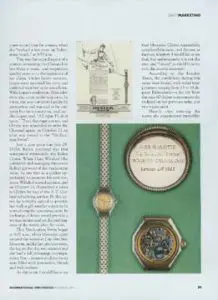
However, due to the colossal bravery character displayed by Gleitz throughout the attempt, few still held doubts that her previous attempt had been authentic.
It was in the rescue boat that a reporter noticed a small gold watch worn on a riband around the neck of Miss Gleitz; observing that she was keeping good time must have been throughout the attempt.
As promised, on the 27th of October Mercedes Gleitz sent a letter to Hans Wilsdorf. It read: ‘You will like to hear that the Rolex Oyster watch that I carried on my Channel swim proved itself a reliable accurate timekeeping companion, even though it was subjected to complete immersion for hours in seawater at a temperature of not more than 58 often as low as 51. This is to say nothing about the sustained buffeting it must have received. Not even the quick change to the high temperature in the boat cabin when I was lifted from the water seemed to affect the even tenor of its movement. The newspaper man was astonished I, of course, am delighted with it.’
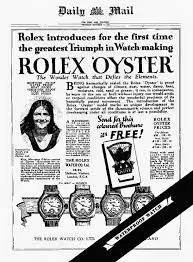
Wilsdorf took full advantage of this priceless review, purchasing a now famous front page advertisement in the London Daily Mail on November 24th 1927.
The Rolex Oyster had arrived to worldwide acclaim with the assistance of Mercedes Gleitz.
Here we have a great example of the part the Rolex brand has played in building its own worth mythology. If you’re looking for a stylish investment owning a piece of history appeals to you, get in touch with London pawnbroker Suttons and Robertsons to enquire about our range of vintage Rolex watches.


